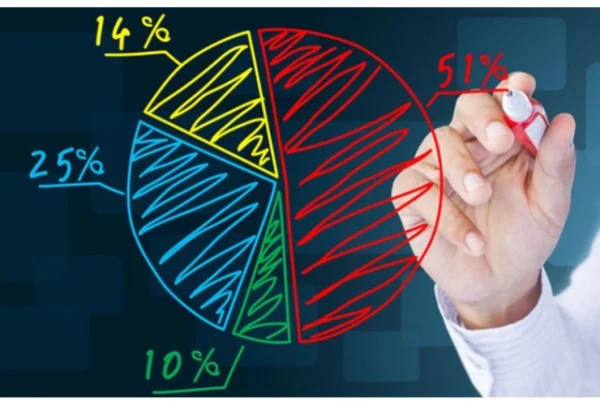Introduction
For marketers, Key Performance Indicators (KPIs) for content marketing play a crucial role in reflecting the effectiveness of the content strategy that your business is implementing. Understanding these metrics is vital for measuring success and driving future marketing efforts.
What Are Content Marketing KPIs?
Content marketing serves as the primary voice for a communications campaign, transmitting messages to users through various formats such as articles, images, and videos. Content marketing KPIs are specific metrics that measure and evaluate the effectiveness of content marketing initiatives, providing insights that help you refine your strategies.

Key Types of Content Marketing KPIs
Depending on your communication goals, you can choose appropriate groups of content marketing KPIs to monitor and assess your produced content. These include:
- User Behavior KPIs: Help assess customer perceptions, thoughts, and actions, enabling the development of tailored marketing programs.
- Engagement Metrics KPIs: Used to increase the number of visitors and interactions on your channels.
- Lead Generation KPIs: Aim to enhance the quantity of potential customers and develop your existing leads.
- Brand Awareness KPIs: Evaluate the current reach of your brand and identify ways to enhance brand recall among customers.
- Sales Metrics KPIs: Provide a comprehensive overview of your business revenue and help develop future growth strategies.
User Behavior Metrics
User behavior KPIs provide deeper insights into how users navigate from the research phase to purchasing decisions. Monitoring these metrics helps you understand what content resonates with customers and what might be causing friction.
Unique Visitors
The unique visitors metric indicates how many individual customers have visited a specific webpage.
Example: If a user visits your site, reads an article, and navigates to two other pages, this counts as one unique visitor. Even if they leave and return later, they are still considered one unique visitor.
This metric can highlight potential customers who are considering your offerings but have not yet made a decision, allowing you to tailor follow-up strategies.
Page Depth
Page depth measures how many clicks users make to navigate from the homepage to a particular page.
Example: A low page depth indicates that users may not find your content engaging enough to explore further. Typically, a page depth of around five is seen as safe; higher page depths can hinder SEO effectiveness.
Google’s crawling limitations mean that if your page depth is excessive, it may reduce the frequency with which Google can index your pages, especially for larger websites.
Average Time on Page
Average time on page is a critical KPI that reveals how long users spend viewing a specific page.
Example: If the average time spent is under 30 seconds, it suggests that your content may not be engaging. An optimal benchmark is approximately 3 minutes and 17 seconds.
To improve this metric, consider:
- Reducing Load Times: Optimize images and compress files to enhance user experience.
- Adding Internal Links: Facilitate navigation by including links that lead to relevant content, encouraging users to stay longer.
- Enhancing Content Quality: Ensure your content is original, well-structured, and includes engaging multimedia elements.
Bounce Rate
Bounce rate measures the percentage of users who leave your website after only viewing one page.
Example: High bounce rates may result from irrelevant content, poor user experience, or slow load times.
To reduce bounce rates, you might:
- Choose captivating headlines and concise language.
- Optimize image sizes to improve load times.
- Limit intrusive pop-ups.
Pages Per Session
This metric indicates the average number of pages viewed during a user’s session on your site.
Example: A low pages per session count suggests that your content may not be compelling enough to encourage users to explore more.
If this metric is high, it indicates that users find your content valuable, potentially leading to increased engagement and conversions.
Traffic Sources
Traffic sources summarize the origins of traffic to your website.
Example: There are six primary sources of traffic:
- Organic Traffic: Users who find your site through search engines.
- Paid Traffic: Users directed to your site through paid ads.
- Referral Traffic: Visitors coming from other websites.
- Direct Traffic: Users who directly enter your URL.
- Email Traffic: Subscribers who come from your email campaigns.
Understanding these metrics helps you identify which channels are performing well and which need improvement.

Scroll Depth
Scroll depth is a significant metric that evaluates how far down a page users scroll.
Example: If a 2000-word article has users scrolling only 25% of the way down, it indicates a lack of interest or relevance.
Utilizing tools like HotJar or Crazy Egg can help measure this. Adjustments may include improving content readability and incorporating engaging visuals.
Engagement Metrics
Engagement KPIs illustrate user interactions with your content. These metrics are derived from likes, shares, comments, reposts, and incoming requests.
Likes and Shares
The number of likes and shares reflects the engagement level of your content.
Example: High sharing rates indicate that your content is perceived as valuable and users are eager to share it with others.
Comments
Comments provide qualitative feedback on user interest.
Example: Articles with many comments often indicate a high level of engagement and relevance, showing that readers feel compelled to express their thoughts.
Re-publication
Re-publication refers to instances where your content is cited or referenced by others.
Example: If your article is quoted or shared on another platform, it reflects the quality and impact of your content.
Incoming Requests
This metric captures inquiries from potential customers, such as collaboration proposals or product inquiries.
Example: The volume of incoming requests can signal how effectively your content resonates with your target audience and generates interest.
Lead Generation Metrics
Lead generation KPIs measure the effectiveness of your content in attracting potential customers.
New vs. Returning Visitors
New visitors are first-time users on your site, while returning visitors are those who have previously engaged.
Example: A strategy focused on attracting new visitors can boost organic traffic, while returning visitor metrics help gauge customer loyalty and content relevance.
Newsletter Sign-ups
Newsletter sign-ups represent individuals who have expressed interest in your offerings.
Example: A high sign-up rate indicates that your content is compelling enough to persuade users to stay connected.
Conversion Rate
The conversion rate is the percentage of users who take a desired action after interacting with your content.
Example: If 50 users convert from 1,000 interactions, the conversion rate is 5%. This metric helps inform advertising strategies based on performance.
Monitoring Existing Leads
Monitoring existing leads is essential for maximizing revenue growth.
Example: If you sell courses, consider creating advanced programs to encourage repeat purchases from previous customers.
By keeping a close eye on these KPIs, marketers can effectively navigate their content marketing strategies, ensuring continuous improvement and alignment with business goals

GoldSkin > Content Marketing > A Comprehensive Guide to Content Marketing KPI Metrics from A to Z
Articles In The Same Category
Content Marketing
How to Craft Engaging Marketing Content for Maximum Business Impact
Content Marketing
Benefits and Strategies for Creating Evergreen Content for Your Website
Content Marketing
What is Always-On Content? How to Build a Consistent Content Strategy
Content Marketing
A Professional Guide to Capturing Stunning Product Photos Using Lightroom and Photoshop